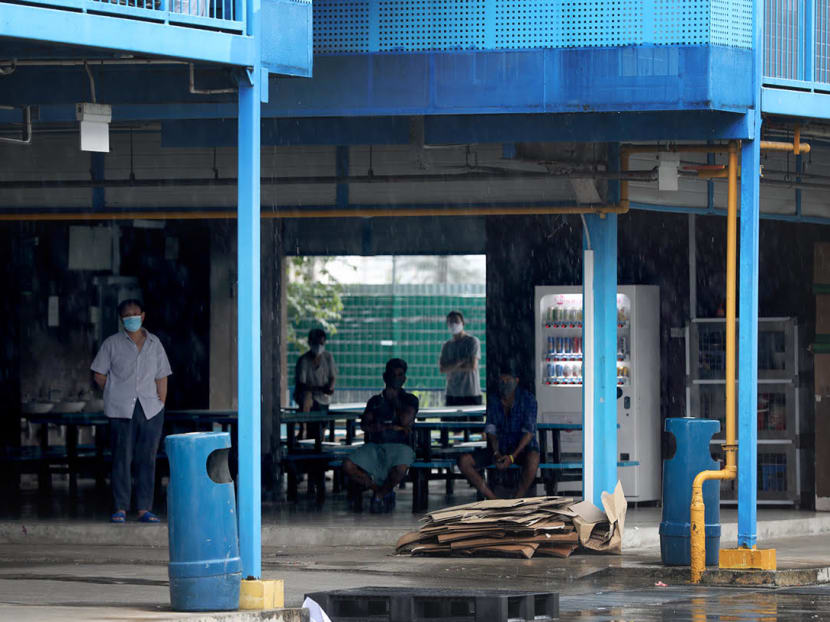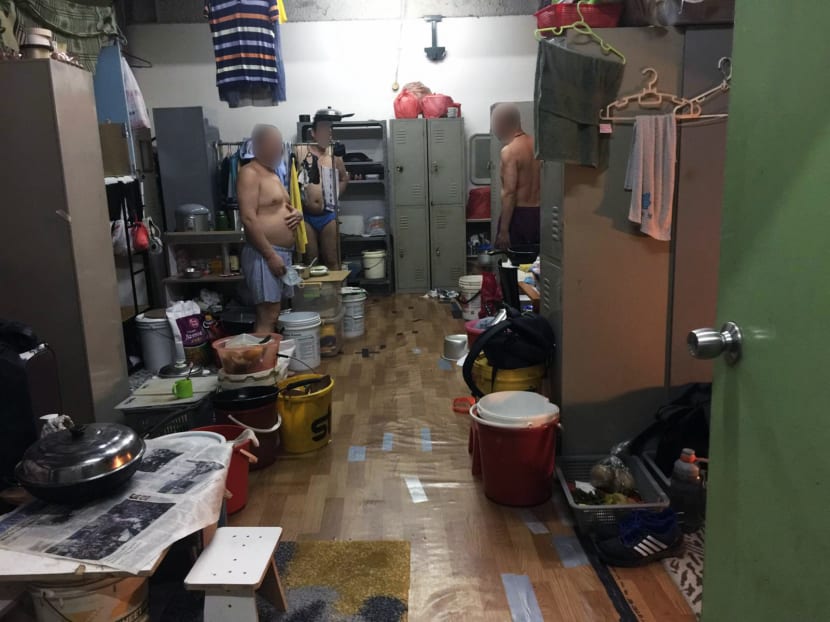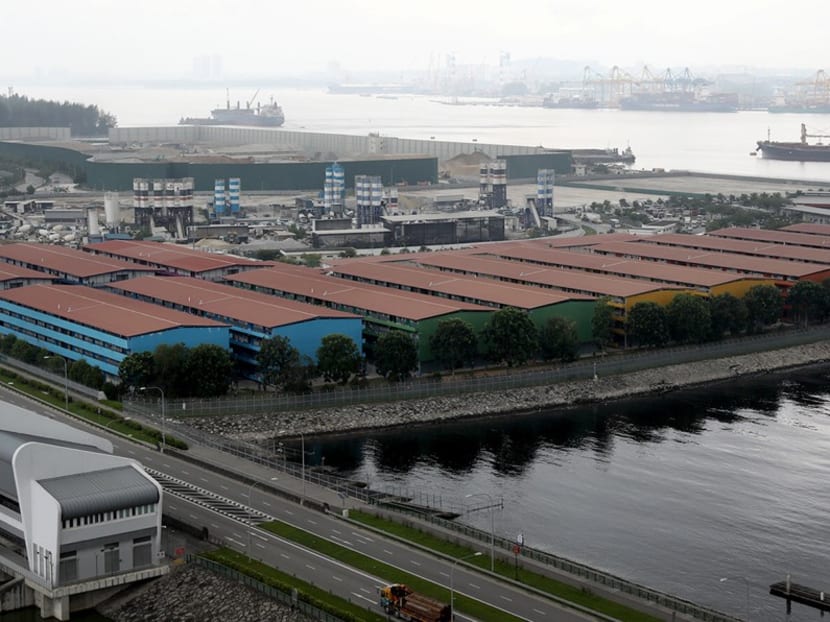Time for Singapore to address some uncomfortable questions on its migrant workers
Even as we attend to the first order of business to suppress the many Covid-19 clusters in foreign worker dormitories, there are broader questions for our society to address based on an honest and thorough appraisal.

Foreign workers at a common area in S11 Dormitory@Punggol on April 21, 2020. The dormitory has Singapore's largest cluster of Covid-19 cases, with 2,234 confirmed cases as of April 23, 2020.
In the ongoing battle to combat the Covid-19 infections in the foreign workers’ dormitories, the focus and dominant narrative, unsurprisingly, have been on overcoming the clear and present public health issues there.
The imperative is to safeguard the wellbeing and interests of the foreign workers who reside there (and including those who have been moved out) and to protect the rest of the community.
In 2019, work-permit holders and foreign domestic workers comprise 56 per cent (or about 941,000) of the 1.68 million non-residents in Singapore. Singapore continues to have a strong appetite for low-wage migrant workers, and their numbers will likely remain substantial in the years to come.
However, it is clear we have to reduce our heavy reliance on foreign workers. This is not something that can be achieved overnight without significant impact to our economy.
In the meantime, it is imperative that we work resolutely towards enhancing the working and living conditions for migrant workers.
The apparent deplorable state of hygiene and overcrowding in the foreign workers’ dormitories today should remind us of the proverbial dog that did not bark.
Even as we attend to the first order of business to suppress the many Covid-19 clusters in the dormitories, there are broader questions for our society to address based on an honest and thorough appraisal.
A failure to do so might result in us merely tackling the symptoms, and not the causes, of the challenges associated with the large migrant worker population here.
In turn, that challenges the viability and legitimacy of our immigration policy and our economic formula even as the government assiduously manages public opinion over the news and images coming out of the dormitories.
What might be some of the broader questions? Let me offer two.
The first is whether our heavy reliance on cheap, transient foreign labour is a sustainable economic formula.
Secondly, are we prepared to shoulder more of the costs of having a large foreign labour force?
Have such costs been properly allocated among the stakeholders? Or are the benefits of such a policy largely privatised while the costs socialised?
Both questions implicate our values system: How we view the foreign workers who do the so-called 3D (dirty, dangerous, and demeaning) jobs that Singaporeans do not want to do.
We cannot continue to reap the benefits of a significant low-wage foreign worker presence here while not properly shouldering the costs that come with it.

Mr Rana (not his real name), a 29-year-old Bangladeshi foreign worker residing in Cochrane Lodge 1, said he took this photograph on April 17, 2020, showing that there was a lack of space in rooms to maintain a safe distance. Photo: Mr Rana
The trade-offs must be recognised in form and in substance and be borne equitably by the Government, employers and Singaporeans, and between Singaporeans and the migrant workers.
Let’s assume that our economic formula, requiring large inputs of labour, is sustainable.
We will need to provide adequate, decent dormitories and amenities and be more willing to share open and public spaces with the foreign workers who, like Singaporeans, are entitled to dignity in work and life.
In the aftermath of the Little India riot in 2013, one line of policy thinking was to provide purpose-built dormitories, with the range of facilities and amenities so that the foreign workers need not venture out and congregate in public places.
Such newer and larger dormitories were expected to form an increasingly prominent part of the foreign worker housing landscape. To this end, Parliament passed the Foreign Employee Dormitories Act in January 2015.
The purpose of the legislation is to establish a regulatory regime for the provision of facilities and amenities and the delivery of services to dormitory residents.
Also established was a licensing framework for operators of such dormitories, stipulating certain accommodation standards and providing for the appropriate enforcement mechanisms.
The legislation also sought to promote “the sustainability of, and continuous improvements in, the provision of services at foreign employee dormitories”.
In moving the Bill in January 2015, then Manpower Minister Tan Chuan-Jin explained that it was the Government’s longer-term view that “the accommodation needs of Work Permit Holders are best met in such dormitories, where there are self-contained living, social and recreational facilities”.
More importantly, the law was “a progressive measure aimed at ensuring better design parameters and requirements” for the development of new dormitories.

Five years on, the deplorable conditions at many dormitories leaves much to be desired, going by the high Covid-19 infection numbers and the litany of complaints by non-governmental organisations, which seem to have fallen on deaf ears.
It would not be an exaggeration to say that a sizeable proportion of the dormitories are not fit for purpose and were conducive to widespread transmission of infectious diseases such as Covid-19.
So what has happened in a short span of five years since legislation was passed? There has to be a no-holds barred thorough review of how and why the ball was dropped.
But such a review must be situated within an honest and purposeful engagement of the broader questions. At the core, these questions concern the kind of a society that we aspire towards and, more importantly, the values that will determine how we get there.
Taken together, they impinge intimately on whether Singapore will remain an attractive destination for both short- and long-term foreign manpower with the attendant economic, social, and political trade-offs.
As more migrant workers became infected in recent weeks, the online vitriol — bordering on xenophobia and racism — also grew.
The basis of xenophobia is ultimately fear, including the fear that the migrant worker community threatens our wellbeing, health, and safety.
These fears may well stem from ignorance, stereotypes, and close-mindedness, but they can feed into the growing doubt of some Singaporeans towards immigration.
Such negative sentiments towards immigration are infectious and counter-productive.
Once immigration is perceived to be an existential threat, then the essence of an openness of mind, spirit and heart — so vital in an immigrant society like ours — will certainly be overwhelmed by growing angst, anger, and anxiety among Singaporeans and migrants alike.
We are at the threshold of the promised mid-term review of the controversial Population White Paper introduced in 2013.
To recap, Parliament endorsed the planning parameter of 6.9 million people in Singapore in the year 2030.
Can the Government secure a strong buy-in from Singaporeans for its immigration policy embodied in the White Paper?
It is clear that it cannot be business as usual. It would be a larger tragedy if we only dealt with the Covid-19 infections in the dormitories as a public health issue but not engage with the broader questions raised.
The scale and intensity of Covid-19 infections in the dormitories is disconcerting and a sad reminder that our foreign worker policy remains problematic. And for that we are all the poorer for it.
ABOUT THE AUTHOR:
Eugene K B Tan is associate professor of law and Lee Kong Chian Fellow at the Singapore Management University as well as a former Nominated Member of Parliament.









